- Top Employee Onboarding Software
- Why Use Employee Onboarding Software?
- Key Features of Effective Onboarding Software
- How To Choose The Right Onboarding Software?
- Which is the Best Onboarding Software?
- Frequently Asked Questions (FAQs)
- What Is Upskill And Reskill?
- Difference Between Reskilling And Upskilling
- Upskilling for Workplace Advancement
- Reskilling for Career Transformation
- Crafting Successful Upskill and Reskill Strategies
- Upskill And Reskill Strategizing: Things to Keep in Mind
- Measuring the Impact of Skill Development Initiatives
- Frequently Asked Questions
- What’s a Skill Gap?
- Employee Skill Gap Analysis: Why Do We Need It?
- How To Conduct Employee Skill Gap Analysis?
- Addressing Skill Gaps Through Training and Hiring
- Utilizing Skills Gap Analysis for Strategic Planning
- Leveraging Employee Skill Gap Analysis: Things To Keep In Mind
- Frequently Asked Questions
- Transformative Role of AI in Talent Acquisition
- Impact of AI on Business Recruiting
- Overcoming Challenges in AI-Driven Talent Acquisition
- Starting with AI in Talent Acquisition
- Future Landscape of AI in Talent Acquisition
- Frequently Asked Questions
- HR In The Hot Seat - Challenges With Evolving Workforce
- Mastering Effective HR Management: Tips For Overcoming Challenges
- Summing Up
- The Future of HR: Key Trends for 2024
- Skill-Based Hiring
- Prioritizing Employee Experience, Engagement & Well-being
- AI-Empowered Workforce Evolution and Its Impact
- Taking Diversity, Equity, and Inclusion Beyond Mandates
- Hybrid and Remote Work
- Embracing the Gig Economy and Blended Workforce
- Transparent HR Practices
- Climate Change Adaptation in HR Practices
- Leveraging HR Analytics for Data-Driven Decisions
- Continuous Learning & Development to Improve Productivity
- The Office Buzz in 2024
- Bottom Line - HR Operating Model Needs A Shift
- Importance and Impact of Recognizing Employee Birthdays
- Professional Birthday Wishes for Employees (All Experience Levels)
- Personalized Birthday Wishes for Employees in Different Roles
- Fun Birthday Wishes for Employees (with Templates)
- Birthday Wishes for Remote Employees
- Heartfelt Birthday Wishes for Employees
- Belated Birthday Wishes for Employees
- Simple & Sweet Birthday Wishes for Employees
- Celebrating Employee Birthdays: Ideas and Traditions
- Tips and Ideas for Sending Birthday Wishes to Employees
- Closing Thoughts
- Frequently Asked Questions
- What Is An Employee Referral?
- Benefits of Implementing Employee Referral Programs
- Setting Up an Effective Employee Referral Program
- Employee Referral Email
- Employee Referral Scheme
- Overcoming Challenges of Employee Referrals
- Companies with Best Employee Referral Programs
- Employee Referral Programs: Best Practices
- Closing Thoughts
- Frequently Asked Questions (FAQs)
- Importance of Team Building Activities
- Types of Team Building Activities
- Outdoor Team Building Activities for Employees
- Indoor Team Building Activities for Employees
- Easy Team Building Activities for Remote Employees
- Team Building Activities For New Employees (Icebreakers)
- Fun Team Building Activities for Different Goals
- To Boost Communication and Collaboration
- To Reduce Stress Levels and Promote Well-being
- Aligning Team Purpose and Values with Strategic Activities
- Final Remarks
- Frequently Asked Questions
- Importance of Employee Appreciation Quotes
- Work Appreciation Quotes for Employees
- Employee Appreciation Quotes for Hard Work Recognition
- Employee Appreciation Quotes for Teamwork and Collaboration
- Appreciation Quotes for Celebrating Employee Anniversaries and Milestones
- Employee Appreciation Quotes for Strong Work Ethics
- Employee Appreciation Quotes for Project & Goal Completion
- Employee Appreciation Quotes for Quality of Work
- Employee Appreciation Quotes for Creativity and Innovation
- Appreciation Quotes for Managers
- Peer-to-Peer Employee Appreciation Quotes
- Appreciation Quotes for Employees Leaving the Company
- Employee Appreciation Quotes for Thoughtful Gestures
- Funny Employee Appreciation Quotes
- Short Employee Appreciation Quotes
- Employee Appreciation Quotes for Different Roles
- Employee Appreciation Quotes for Senior Leadership
- Creative Ways to Use Employee Appreciation Quotes
- Summary
- Frequently Asked Questions (FAQs)
- What is Employee Satisfaction?
- Importance of Employee Satisfaction
- Objectives of Employee Satisfaction
- Employee Satisfaction vs. Employee Engagement
- Key Reasons for Employee Dissatisfaction
- Strategies for Improving Employee Satisfaction
- Ways to Measure Employee Satisfaction
- Best Practices for High Employee Satisfaction
- Final Remarks
- Frequently Asked Questions (FAQs)
- How to Craft Effective Employee Appraisal Comments
- Key Areas to Focus in Performance Review
- Comments On Hard Work & Dedication
- Assessing Interpersonal Skills
- Evaluating the Ability to Collaborate & Work in Teams
- Gauging Punctuality
- Commenting on Communication Style
- Reviewing Time Management and Productivity
- Leadership in Performance Appraisals
- Assessing Creativity & Innovation
- Evaluating Problem-Solving Abilities
- Recognizing Flexibility and Dependability in Reviews
- Employee Appraisal Comments for Different Roles
- Summary
- Frequently Asked Questions (FAQs)
- Employee Grievance Meaning
- Importance of Employee Grievance Process
- Types of Workplace Grievances
- Reasons for Employee Grievances
- Employee Grievance Procedure
- Steps in the Employee Grievance Handling Process
- Employee Grievance Form Example
- Final Remarks
- Frequently Asked Questions (FAQs)
- What is Company Culture?
- Importance of Company Culture
- Types of Company Culture
- Factors Contributing to Organizational Culture
- Assessing & Developing Corporate Culture
- Company Culture - It’s not just Perks or Feels
- Good Company Culture Examples
- Developing Company Culture: Best Practices
- Closing Thoughts
- Frequently Asked Questions (FAQs)
- What is Employee Empowerment?
- Benefits of Empowering Employees
- Employee Empowerment vs. Micromanagement
- Strategies for Effective Employee Empowerment
- Role of Managers in Fostering Empowerment
- Organizational Structure Supporting Empowerment
- Overcoming Barriers to Employee Empowerment
- Frequently Asked Questions (FAQs)
- What is Employer Branding?
- Importance of Employer Branding Strategy
- How to Build an Employer Branding Strategy?
- Strategies for Building a Strong Employer Brand
- How to Measure and Boost Your Employer Branding Success?
- Examples of Strong Employer Brand Strategy
- Best Practices for an Effective Employer Branding Strategy
- Closing Thoughts
- Frequently Asked Questions (FAQs)
- What are Employee Wellness Programs?
- Importance of Employee Wellness Programs
- Examples of Employee Wellness Programs
- Real-Life Examples of Corporate Wellness Programs
- Strategies for Encouraging Participation
- Supporting Diverse Employee Needs
- Creating Comprehensive Wellness Programs
- Measuring the Impact on Business and Employees
- Closing Thoughts
- Frequently Asked Questions (FAQs)
- What is Talent Management?
- Developing a Winning Talent Management Strategy
- Models and Frameworks
- Tips for Framing Effective Talent Management Strategy
- Looking Ahead: Recent Trends in Talent Management
- Frequently Asked Questions
- Role of AI in HR: Addressing Common Challenges
- Artificial Intelligence in HR Processes
- AI Tools for HR Functions
- How to Adopt AI in HR?
- Addressing Challenges of AI in HR
- Ethical and Responsible AI Use
- The Future of AI in HR
- Closing Thoughts
- Frequently Asked Questions
- What is Performance Management?
- Elements of Effective Performance Management
- Performance Management Cycle
- Differentiating Performance Management
- Benefits of Performance Management With Examples
- Challenges faced in Performance Management and their Solutions
- Future Trends in Performance Management
- Frequently Asked Questions
- Changing Role of HRM
- Changing Role Of HR Manager
- Technology and the Changing Role of HRM
- The Rise of AI and Machine Learning in HR
- Mobile Technology's Impact on HR Practices
- The Significance of People Analytics in HR
- Navigating the Future of HR Technology
- Final Remarks
- Frequently Asked Questions
- Compensation Management Meaning
- Compensation Types
- Breaking Down The Compensation Management Process
- HR Software for Compensation Management
- Current Trends in Compensation Management
- Frequently Asked Questions
- Defining Flexible Work Arrangements
- Flexible Working: Advantages for Businesses
- Challenges of Flexible Work Arrangements
- Crafting Flexible Working Practices
- Types Of Flexible Work Arrangements
- Comparing Flexible Work Arrangements
- Real-Life Examples of Flexible Work Arrangements
- Final Remarks
- Frequently Asked Questions
- Conflict Resolution Meaning
- Conflict Origins
- Tried & Tested Conflict Resolution Strategies
- Methods of Conflict Management at Workplaces
- Conflict Resolution Strategies: Top Management Tips
- Summary
- Frequently Asked Questions
- Career Development Meaning
- Career Development Plan for Employees
- Career Development in HRM: Growth Ideas For Employees
- Issues in Career Development and Their Solutions
- Closing Thoughts
- Frequently Asked Questions
- Understanding Compensation
- Exploring Benefits
- Difference between Compensation and Benefits
- Compensation & Benefits Structure
- Final Remarks
- Frequently Asked Questions
- Defining Recruitment in HR Practices
- Exploring Talent Acquisition in HR
- Understanding Talent Acquisition vs Recruitment
- When to Recruit or Acquire Talent
- Talent Acquisition vs Recruitment: Responsibilities
- From Recruitment To Talent Acquisition
- Closing Thoughts
- Frequently Asked Questions
- Work Culture Meaning
- Types of Work Cultures
- Components of Culture
- Best Work Culture Examples Set By Top Companies
- Creating a Positive Work Culture
- Closing Thoughts
- Frequently Asked Questions
- Defining Learning vs Development
- Importance of Learning and Development
- L&D Activities for Employees
- Choosing the Right L&D Activities
- Crafting an Effective L&D Strategies
- Aligning L&D Strategy with Business Goals
- Designing Engaging Learning Journeys
- Learning and Development Process: KPIs
- ROI in Learning and Development
- Emerging Trends in L&D
- Closing Thoughts
- Frequently Asked Questions
- What Is Leadership Development?
- Key Skills for Leaders
- How To Develop Leadership Skills in Organizations?
- What Is A Leadership Development Program?
- How To Develop A Leadership Development Program?
- Example of A Leadership Development Plan
- Benefits of Leadership Development Training
- Frequently Asked Questions
- Defining Diversity Training
- Importance of Diversity Training
- What are the Types of Diversity?
- Types of Diversity Training Methods
- Diversity Training Activities
- Choosing A Diversity Training Program
- How to Implement Diversity Initiatives
- Best Diversity Training Programs (Real-Life Examples)
- Improving the Effectiveness of Diversity Training
- Tracking and Evaluating the Results of DE&I Training Efforts
- Essential Elements for Successful Diversity Training
- Closing Thoughts
- Frequently Asked Questions
- Defining Occupational Health & Safety
- Evolution of Workplace Health and Safety
- Identifying Common Workplace Hazards
- Global Impact on Occupational Health & Safety
- Managing Employee Health and Safety Risks
- Occupational Health and Safety Problems
- Future of Occupational Health and Safety
- Frequently Asked Questions
- Employee Orientation Defined
- Employee Onboarding Explained
- Orientation and Onboarding: Understanding the Difference
- Importance of Orientation and Onboarding
- Crafting Comprehensive Integration Strategies
- Quick Tips for Orientation and Onboarding
- Frequently Asked Questions
- What is HR Metrics?
- Importance of HR Metrics
- HR Metrics Examples in Recruitment
- HR Metrics Examples in Employee Retention
- HR Metrics Examples in Revenue
- Other Common HR Metrics
- Soft HR Metrics Example
- HR Metrics Formula
- Utilizing HR Metrics Effectively
- Future of HR Metrics
- Summary
- Frequently Asked Questions
- Defining Decision Making Process
- Key Concepts In Decision Making
- Decision Making & Problem Solving
- Tips For Improving Decision Making Skills
- Selected Practice Questions & Answers
- Conclusion
- Frequently Asked Questions (FAQs)
- A case(s) of miscommunication
- The devil is in the (resume) details
- One for the complaints!
- What is an Exit Interview?
- Benefits of Exit Interviews to an Organization
- How to Conduct Exit Interviews?
- Exit Interview: Sample Questions to Ask
- Overcoming Challenges of Exit Interviews
- Exit Interviews: Best Practices
- Closing Thoughts
- Frequently Asked Questions
- Technology in the Workplace
- Benefits of Tech Integration
- Technology in the Workplace: Key Functions
- How Technology Normalized Remote Work
- Workplace Technology: Top Tools and Software
- Steps for Effective Technology Implementation
- Overcoming Tech Implementation Challenges
- Ethical Considerations in Tech Use
- Keeping Pace with Tech Trends
- Closing Thoughts
- Frequently Asked Questions
- What is Ethical Leadership?
- Principles of Ethical Leadership
- Difference between Ethics and Integrity
- Importance of Ethical Leadership
- Ethical Leadership in Practice
- Overcoming Challenges
- Frequently Asked Questions
- Embracing Change Management
- Mastering People Analytics
- Enhancing Stakeholder Relationships
- Navigating Diversity, Equity & Inclusion
- Upholding Ethics and Data Privacy
- Developing Critical Thinking
- Advancing Negotiation Techniques
- Fostering Inter-departmental Collaboration
- Building Resilience in HR
- Frequently Asked Questions
- What is Mental Health?
- Benefits of a Mentally Healthy Workforce
- Prioritising Mental Health: Creating a Culture of Support
- Final Remarks
- Frequently Asked Questions
- Gen Z vs Millennials - What is the difference?
- Retain and Engage Gen Z Employees: Need and Strategies
- Strategies to Retain and Engage Gen Z Employees
- Rethinking Requirements
- Final Remarks
- Frequently Asked Questions
- Understanding Millennial Leadership Needs
- Key Leadership Skills for Millennials
- How To Develop Millennial Into Leaders
- Additional Strategies to Develop Leaders
- Learning Preferences of Millennials
- Benefits of Investing in Millennial Leaders
- Closing Thoughts
- Frequently Asked Questions
- Understanding Fluff
- Examples of Interview Fluff
- Identifying Interview Fluff
- Addressing Interview Fluff
- Seeing Through the Fluff
- Frequently Asked Questions
- What is the Gender Pay Gap?
- Is the Gender Pay Gap Real?
- Factors Affecting the Gender Pay Gap
- How Age Impacts Women’s Earnings
- The ‘Motherhood Penalty’
- Education's Role in Wage Differences
- Racial and Ethnic Disparities in Pay
- Closing the Gender Gap
- Frequently Asked Questions
- Top Weirdest Late-To-The-Office Excuses
- The Fine Art of Balancing Wit and Wisdom in HR
- Understanding Social Media Recruiting
- Crafting Your Social Media Recruitment Strategy
- Implementing Your Strategy Effectively
- Popular Platforms for Recruitment
- Navigating the Downsides of Social Media Recruiting
- Measuring Success and Adjusting Strategy
- Summary
- Frequently Asked Questions
- Who Is A High Potential (HIPO) Employee?
- Characteristics of A High Potential (HIPO) Employee
- High Potential Employee Identification
- Grooming High Potential Employees
- Why High Potential Employees Leave
- How Do You Retain High Potential Employees?
- High Potential Employee Development: Best Practices
- Closing Thoughts
- Frequently Asked Questions
- What is Digital Fluency?
- Why Digital Fluency Matters?
- Difference between Digital Literacy and Digital Fluency
- Key Components of Digital Fluency
- Achieving Digital Fluency
- Overcoming Challenges
- Future of Workforce Digital Fluency
- Frequently Asked Questions
- What is Loud Quitting?
- Pros and Cons of Loud Quitting
- Reasons Behind the Trend
- Analyzing the Impact
- How HR Can Navigate the Loud Quitting Uproar
- Preventive Strategies
- Closing Thoughts
- Frequently Asked Questions
- Defining Emotional Intelligence in HR
- Why Emotional Intelligence Matters for HR Leaders
- How To Build Emotional Intelligence in HR
- Integrating EQ into HR Practices
- Impact of EQ on Company Culture
- Emotional Intelligence in HR: Major Challenges
- Final Remarks
- Frequently Asked Questions
- Understanding Internal Job Posting
- Internal Job Posting: Pros and Cons
- The Internal Job Posting Process
- Writing Effective Ads for Internal Job Posting
- Strategies for Success of Internal Job Posting
- Summary
- Frequently Asked Questions
- Understanding Workplace Bias
- Common Types of Bias in HR
- Closing Thoughts
- Frequently Asked Questions
- What is a Dry Promotion?
- Dry Promotion: Pros and Cons for Companies
- Impact of Dry Promotion on Employee Retention
- Preventing Talent Loss After Dry Promotions
- Closing Thoughts
- Frequently Asked Questions
- What Is A Stay Interview?
- Importance Of Stay Interviews
- Benefits And Challenges Of Stay Interviews
- Planning And Conducting Stay Interviews
- Stay Interviews: 20 Sample Questions To Ask
- Best Practices For Effective Stay Interviews
- Summary
- Frequently Asked Questions
- Who Is A Boomerang Employee?
- Reasons For Returning
- Benefits Of Hiring Boomerang Employees
- Challenges Of Rehiring
- Interviewing Boomerang Candidates: Sample Questions
- Enhancing The Hiring Process
- Making Informed Decisions
- Final Remarks
- Frequently Asked Questions
- Talent Pipeline Meaning
- Significance of Talent Pipelines
- Advantages of a Talent Pipeline
- Building a Talent Pipeline
- Maintaining a Talent Pipeline
- Attracting Top Talent
- Implementing the Strategy
- Frequently Asked Questions
- What is Micromanagement?
- Recognizing Micromanagement
- Leadership versus Micromanagement
- Keeping Micromanagement in Check
- Beyond Micromanagement
- Summing Up
- Frequently Asked Questions
- Recognizing Signs Of A Bad Hire
- Understanding The Impact On Teams
- Dealing With A Bad Hire
- Preventing Future Bad Hires
- Closing Thoughts
- Frequently Asked Questions
- Defining Neurodiversity
- Importance of Neurodiversity in the Workplace
- Moving Towards Inclusive Environments
- Final Remarks
- Frequently Asked Questions
- Understanding the Generation Gap
- Multigenerational Workforce: Debunking Stereotypes
- Strategies for Bridging the Gap
- Benefits of a Multigenerational Workforce
- Final Remarks
- Frequently Asked Questions
- Defining Productivity Theatre: All Show, No Go
- 5 Key Drivers of Fake Productivity
- Solutions to Combat Productivity Theatre
- Summary
- Frequently Asked Questions
- Defining Grumpy Staying
- Why do Grumpy Stayers not Leave?
- Recognizing the Signs
- Exploring the Causes
- Understanding the Impact
- Addressing the Issue
- Taking Action: Addressing Grumpiness with Empathy
- After the Conversation
- When Grumpy Staying Continues
- Closing Thoughts
- Frequently Asked Questions
- The Rationale Behind Office Peacocking
- Impact on Company Culture
- Impact on Employees
- Case Studies: Examples of Office Peacocking
- The Downside: Potential Pitfalls of Office Peacocking
- Practical Tips for Implementing Office Peacocking
- Frequently Asked Questions
- 13 Common Mistakes Young Managers Make
- Strategies To Avoid Mistakes (Individual Growth)
- How Young Managers Can Boost Teamwork
- Learning From Errors
- Summary
- Frequently Asked Questions
- Understanding Great Regret - What causes the shift shock?
- Impact of Great Regret
- How can HR help make the situation better?
- Closing Thoughts
- Frequently Asked Questions
- Understanding the HR Budget
- Key Components of an HR Budget
- Preparing an HR Budget Step-by-Step
- Importance of HR Budgeting in Management
- Final Remarks
- Frequently Asked Questions
- What are Pre-Employment Assessments?
- Importance of Pre-Employment Testing
- Types of Pre-Employment Assessments
- 15 Tips for Creating Effective Pre-Employment Assessments
- Closing Thoughts
- Frequently Asked Questions
- Exploring the Productivity Paradox
- Understanding the Impact of Solow Paradox
- Productivity Paradox: Why it Matters for Recruiters & HRs
- Identifying Causes and Challenges
- Strategies for Enhancing Productivity
- AI & the Modern-Day Productivity Paradox
- Beyond Technology: Building a Productive Workforce
- Summary
- Frequently Asked Questions
- Understanding the Great Reshuffle 2.0
- Preparing Leaders for the Change
- HR’s Role in Handling Great Reshuffling 2.0
- The Way Ahead
- Frequently Asked Questions
- Definition Of Managerial Grid
- Managerial Grid Theory Explained
- Application Of Managerial Grid
- Criticisms And Limitations
- Evolution And Contemporary Perspectives
- Integrating Managerial Grid With Other Models
- Practical Steps For Implementing Managerial Grid
- Conclusion
- Frequently Asked Questions
- Understanding Skills Taxonomy
- Why do we Need Skills Taxonomy?
- Benefits of Skills Taxonomy
- Components of Skills Taxonomy
- Building a Skills Taxonomy: A Step-by-Step Guide
- Skill Taxonomies vs Intelligence Tools
- Closing Thoughts
- Frequently Asked Questions
- Definition Of Team Building
- Stages Of Team Development
- Top 10 Strategies For Effective Team Building
- Team Building Activities
- Best Practices For Effective Team Building
- Setting Team Building Objectives
- Challenges In Team Building
- Conclusion
- Frequently Asked Questions (FAQs)
- Defining Job Shadowing
- Unpacking the Benefits
- Setting Up the Experience
- Job Shadowing vs Internship
- Dos and Don'ts for HR Professionals
- Closing Thoughts
- Frequently Asked Questions
- Employee Journey Mapping: Meaning & Importance
- Stages of the Employee Journey
- Steps for Effective Mapping
- Employee Journey Map: Where does it begin?
- Employee Journey Map: Template
- Best Practices & Tips
- Summary
- Frequently Asked Questions
- Why are Performance Appraisals needed?
- Evolution of Performance Management
- Modern Performance Practices
- Benefits of Modern Performance Appraisals
- The Future
- Frequently Asked Questions
- Is Experience the Sole Indicator of Success?
- Why Hire Inexperienced Talent?: Key Advantages
- Skills to Look For in Inexperienced Talent
- Challenges and Considerations in Hiring Inexperienced Talent
- Final Remarks
- Frequently Asked Questions
- What is a Company Retreat?
- Company Retreat Ideas: Team-Building & Exploration
- Relaxation and Celebration
- Planning Your Retreat: Things to Keep in Mind
- Closing Thoughts
- Frequently Asked Questions
- Understanding HR Forecasting
- HR Forecasting Key Concepts
- Steps for Implementing HR Forecasting
- Common HR Forecasting Methods
- Closing Thoughts
- Frequently Asked Questions
- What is ESG?
- HR and ESG - Why Care?
- ESG in HR Strategy
- Challenges for HR
- Future of ESG in HR
- Frequently Asked Questions
- Defining the Great Betrayal
- Reasons for Its Spread
- Impact on Workers
- Impact on Corporations
- Rebuilding Trust & Valuing Employees
- Closing Thoughts
- Frequently Asked Questions
- Importance of Clear Expectations
- Setting Expectations Early
- Communicating Expectations Effectively
- Differentiating Expectations
- Reviewing and Adjusting Expectations
- Summing Up
- Frequently Asked Questions
- Understanding KRA Frameworks And Models
- KRAs vs KPAs and KPIs
- Monitoring and Tracking KRAs
- KRAs in Various Roles
- Impact of KRA Frameworks and Models on Organizational Success
- Frequently Asked Questions
- Where: The Place of Work
- When: The Time of Work
- How Much Work: Alternate Employment Models
- Who Does the Work: Intelligence
- Designing Organizations with the Four Dimensions of Work
- Summing Up
- Simplifying Processes: The Foundation of Efficiency
- Reducing Unnecessary Meetings: Reclaiming Valuable Time
- Building Strong Accountabilities: Ensuring Responsibility
- Role of HR in Addressing Inefficiencies
- Continuous Improvement: A Commitment to Excellence
- Leadership's Role in Driving Efficiency
- Conclusion: A Holistic Approach to Efficiency
- Understanding Financial Freedom
- Benefits of Empowering Employees Financially
- Empowering Employees Through Financial Literacy
- Financial Topics That Need Attention Based On Career Stage
- Summing Up
- Frequently Asked Questions
- Defining Employee Voice
- Benefits of Amplifying Employee Voice
- Strategies and Tools
- Encouraging Participation
- Closing Thoughts
- Frequently Asked Questions
- Appraisal Blues: Signs of Unhappy Employees
- Addressing Unhappiness Post-Appraisal
- Non-Monetary Solutions for Dissatisfied Employees
- Summing Up
- Frequently Asked Questions
- Women in the Middle Eastern Workforce
- Importance of DEIB
- Role of HR in Building Inclusive Workplaces for Women
- Measuring Inclusion Progress: Key Metrics
- Closing Thoughts
- Frequently Asked Questions
- Preparing for the Conversation
- Conducting the Conversation
- Best Practices for the Talk
- After the Conversation
- Helping Employees Grow
- Frequently Asked Questions
- Understanding HR Exhaustion
- Factors Leading To HR burnout
- Impact Of HR Burnout
- Strategies To Prevent And Manage HR Burnout
- Role Of Technology In Preventing Burnout
- Celebrating HR Successes
- Summary
- Frequently Asked Questions
- Common Mistakes When Hiring Young Talent
- Building Connections with Candidates
- Summary
- Frequently Asked Questions
- Walking a mile in the employee’s shoes
- Conducting Humane Layoffs
- Remote Layoffs Management
- Supporting Laid-off Workers
- Managing the Aftermath
- Wrapping Up
- Frequently Asked Questions
- Importance of Shortening Time-to-Hire
- Shortening Hiring Time: Pre-Application Stage
- Reducing Hiring Time: Application Stage
- Hacks to Shorten Hiring Time: Interview Stage
- Reducing Hiring Time: Offer Stage
- 5 Other Important Hacks & Strategies
- Final Remarks
- Frequently Asked Questions
HR Metrics: 10+ Important Metrics Explained (With Example & Formula)
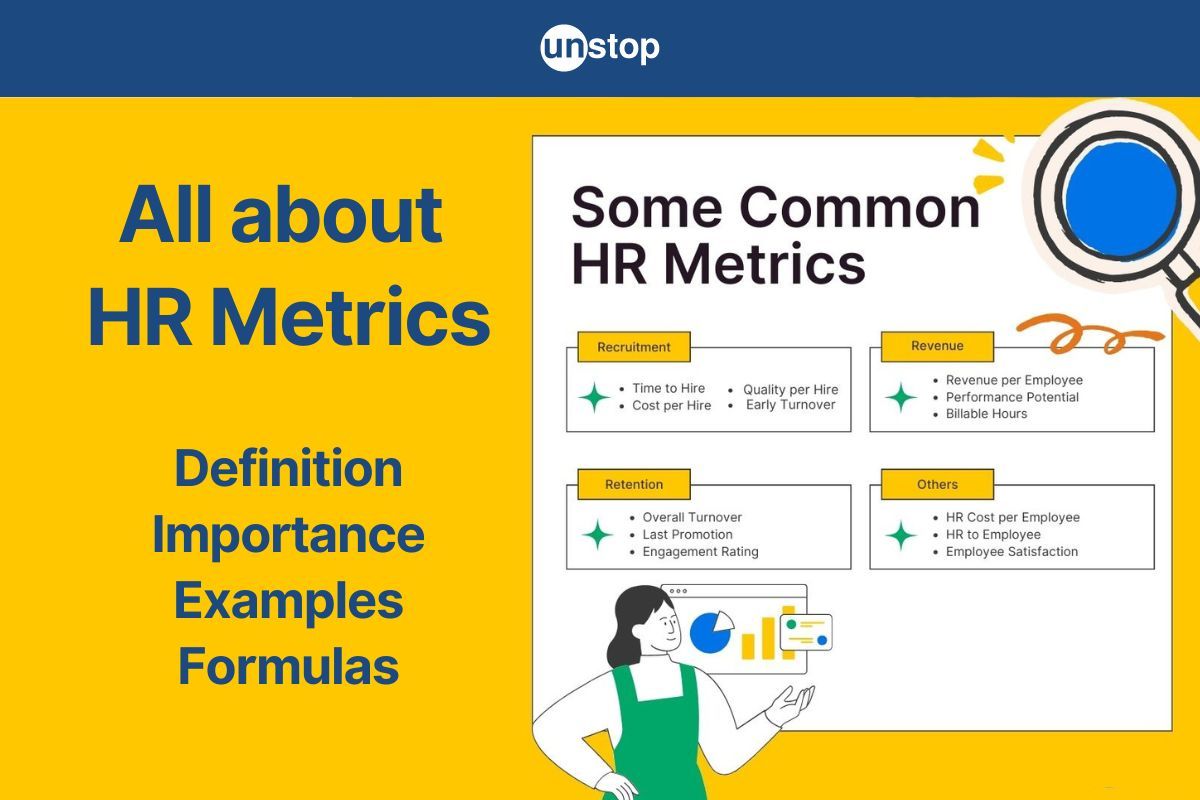
HR metrics are crucial in analyzing and improving various aspects of an organization's workforce. By measuring key performance indicators like employee turnover rates, productivity levels, and training effectiveness, companies can make data-driven decisions to enhance their overall performance.
Businesses have evolved to rely on quantitative data to drive strategic HR initiatives. From the early days of basic headcounts to today's sophisticated analytics tools, the journey of HR metrics reflects a shift towards more efficient and effective people management practices.
Uncover how the role of HR changed from an administrative to a strategic partner.
Let’s delve deeper into the significance and impact of HR metrics in modern business environments.
What is HR Metrics?
Definition of HR Metrics
HR metrics, also known as human resources metrics, are key performance indicators (KPIs) that HR professionals use to measure various aspects of the workforce and HR processes. These metrics can include data related to employee performance, turnover rates, recruitment effectiveness, training and development ROI, and other key HR functions.
By utilizing HR metrics, organizations can gain valuable insights into their human capital management practices and make informed decisions to improve overall performance and productivity.
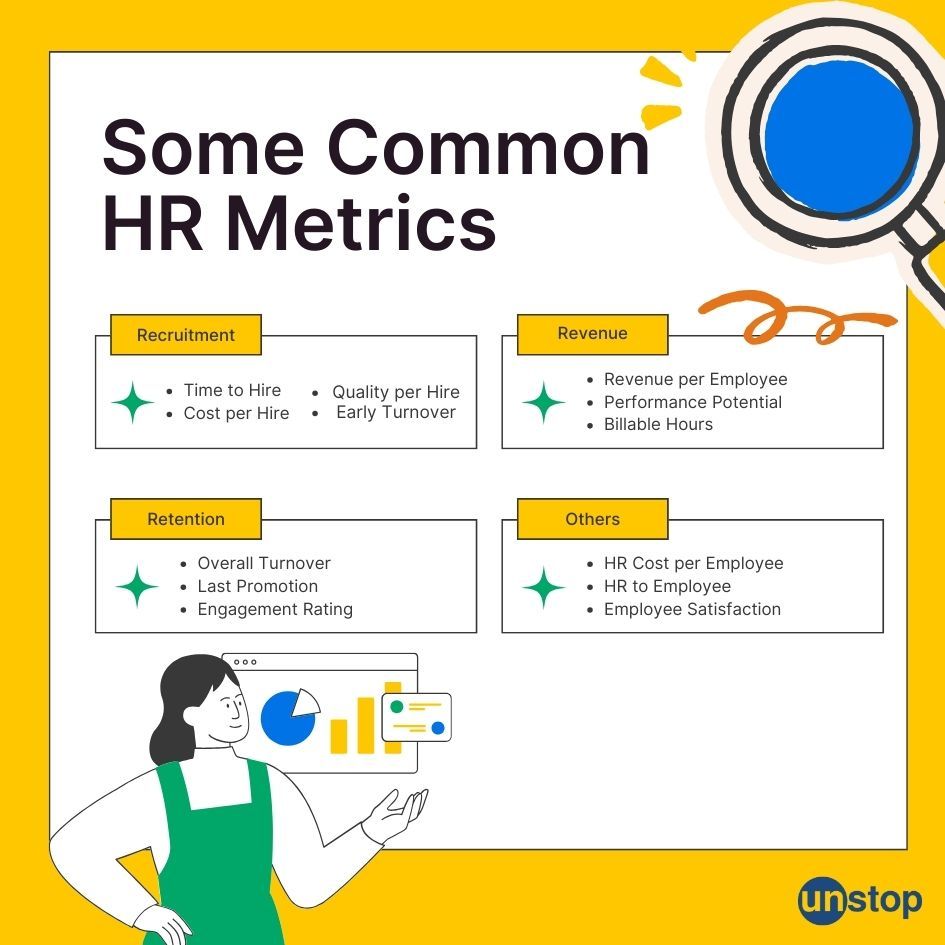

Importance of HR Metrics
Adopting a data-driven approach is paramount in modern HR management practices. By utilizing HR metrics effectively, organizations gain valuable insights into workforce dynamics and trends. These insights enable them to optimize various HR processes such as recruitment, training, and performance evaluation based on empirical data rather than assumptions.
in Talent Acquisition and Retention
HR metrics are crucial in talent acquisition and retention strategies within organizations. By analyzing metrics related to recruitment, turnover rates, and employee engagement, companies can make informed decisions to attract and retain top talent. These metrics provide insights into the effectiveness of HR practices and help identify areas for improvement.
Looking for ways to improve talent engagement? Explore a series of solutions to unlock talent engagement on Unstop.
in Strategic Decision-Making
HR metrics are instrumental in guiding organizations toward strategic decision-making. Businesses can align their HR initiatives with overall organisational goals by tracking key performance indicators (KPIs) such as employee productivity, training effectiveness, and diversity ratios. This alignment ensures that HR efforts contribute directly to enhancing company performance.
Examples abound of how HR metrics support evidence-based decision-making in HR practices. For instance, analyzing absenteeism rates can reveal underlying issues affecting employee morale and productivity. By leveraging this data, HR departments can implement targeted interventions to improve workplace conditions and boost overall employee satisfaction.
in Performance Evaluation of HR initiatives
HR metrics are a powerful tool for showcasing the impact of HR initiatives on organizational performance. Metrics related to employee satisfaction, training outcomes, and workforce diversity demonstrate the tangible results of HR programs. By quantifying the success of these initiatives through data-driven metrics, organizations can communicate their value and drive continuous improvement.
in Continuous Improvement of Organizational Performance
Leveraging HR metrics offers numerous benefits for enhancing organizational performance by fostering a culture of continuous improvement. By tracking KPIs related to employee satisfaction levels, skills development outcomes, and leadership effectiveness, companies can pinpoint areas needing attention or investment. This targeted approach ensures that resources are allocated strategically to maximize overall organizational success.
HR Metrics Examples in Recruitment
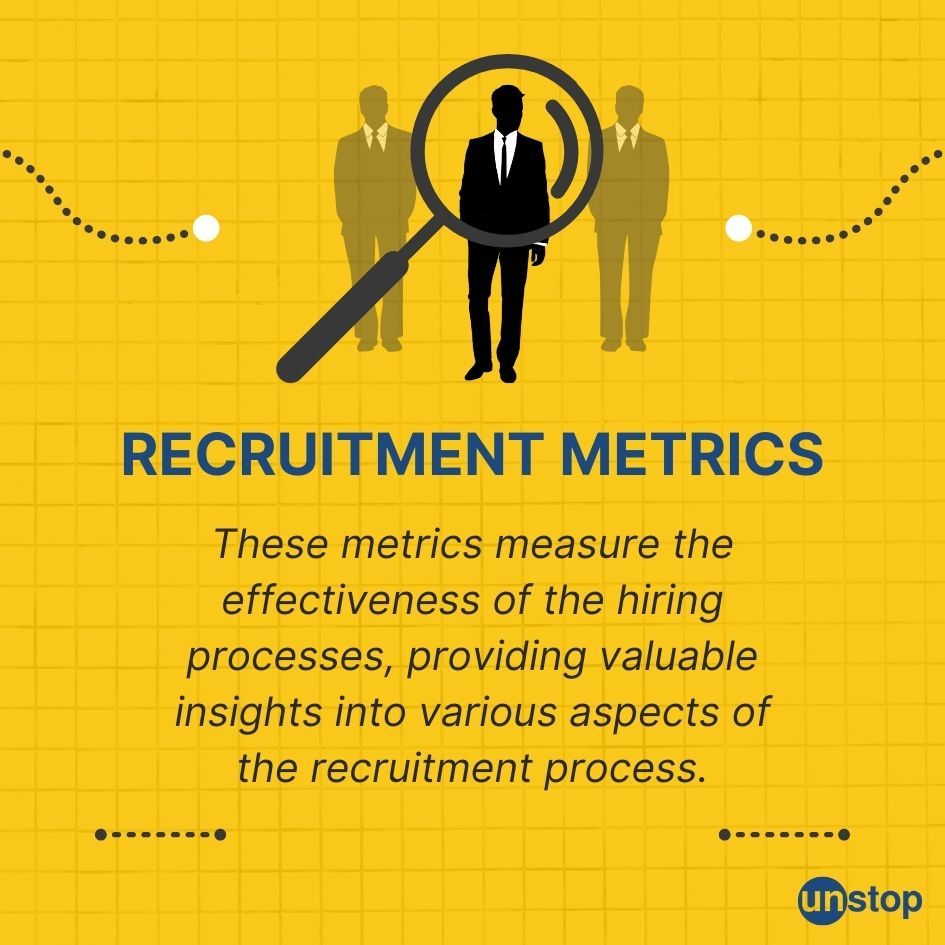
Some common HR metrics in recruitment are:
Time to Hire
Time to Hire measures the duration from when a job opening is approved until the candidate accepts the offer.
By monitoring Time to Hire, organizations can streamline their recruitment processes, reduce delays, and swiftly secure top talent. Reducing the Time to Hire enhances organizational agility and minimizes the risk of losing qualified candidates to competitors.
Cost per Hire
Cost per Hire quantifies the total expenses incurred during the recruitment process divided by the number of hires made within a specific period.
This metric is vital in assessing recruitment costs, aiding in budget planning, and identifying cost-saving opportunities. Monitoring Cost per Hire enables organizations to optimize their recruitment resources effectively, improve cost efficiency, and enhance overall financial performance.
Quality of Hire
Quality of Hire evaluates how well new employees perform and contribute to organizational goals after being hired.
Enhancing the Quality of Hire involves hiring candidates who possess not only the required skills but also align with the company culture, values, and long-term objectives. Improving this metric leads to better business outcomes, increased employee satisfaction, and reduced turnover rates.
Early Turnover
Early Turnover refers to employees leaving an organization shortly after being hired. This phenomenon disrupts organizational stability, increases recruitment costs, and hampers employee morale.
Addressing Early Turnover requires enhancing employee engagement, fostering a sense of belonging within the organization, and creating career development pathways for staff retention. Strategies include implementing robust onboarding processes, providing continuous support and training opportunities, promoting a positive work environment, and conducting regular feedback sessions.
HR Metrics Examples in Employee Retention
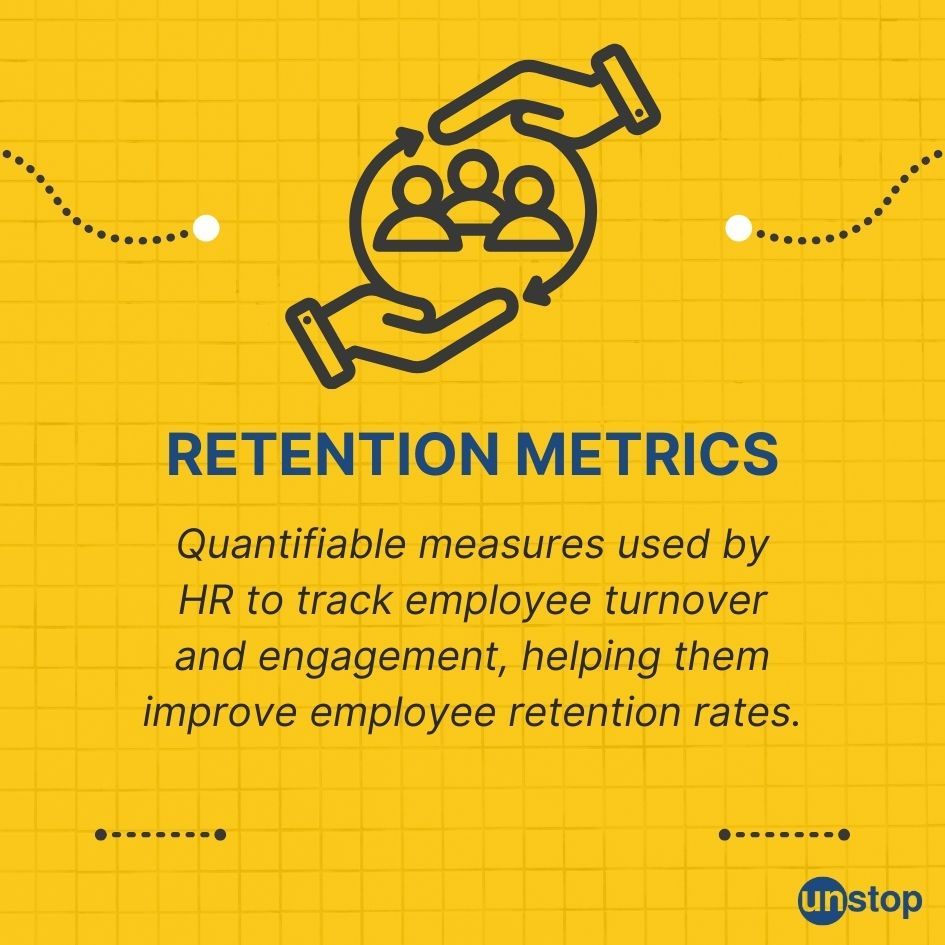
Some common HR metrics for retention are:
Overall Turnover
Overall turnover is a measure of the rate at which employees leave an organization and are replaced over a specific period of time,
High turnover rates can signal underlying issues within the organizational culture that need addressing promptly. Lower turnover rates result in cost savings for organizations through reduced recruitment and training expenses.
Reducing Overall Turnover not only fosters a more stable work environment but also positively impacts organizational productivity.
Did you know? Turnovers cost U.S. businesses a trillion dollars every year. Tracking this metric and reducing overall turnover rates can, thus, significantly impact business performance and the bottom line.
Last Promotion
The Last Promotion metric tracks the time since an employee's last promotion. Monitoring this metric provides insights into employees' career progression within the company, highlighting opportunities for growth and advancement. Employees who see clear pathways for advancement are often more motivated and engaged.
When employees feel stagnant in their current positions without opportunities for advancement, they may become disengaged and seek growth elsewhere. By actively tracking Last Promotion metrics, organizations can create tailored development plans to nurture talent and retain top performers.
Engagement Rating
Engagement rating is a metric used in HR to measure the level of employee involvement, commitment, and satisfaction within an organization.
Engagement Rating directly correlates with employee satisfaction and productivity levels. Engaged employees are more likely to be committed to their work, resulting in higher performance outcomes and overall organizational success. Monitoring Engagement Rating allows companies to proactively address any issues affecting employee engagement.
HR Metrics Examples in Revenue
Revenue per Employee
Revenue per Employee indicates the amount of revenue generated by each individual within an organization. It is a crucial metric for evaluating organizational efficiency. By dividing the total revenue by the number of employees, companies can gauge their financial performance relative to workforce size.
Increasing this metric can lead to streamlined processes, better resource utilization, and ultimately, improved financial outcomes. For example, investing in employee training programs or adopting automation tools can boost Revenue per Employee and drive overall growth.
Performance Potential
Performance Potential metrics assess employees' capabilities beyond their current roles. These metrics play a vital role in talent management and development within organizations. By evaluating Performance Potential, companies can identify high-potential employees and tailor development plans to nurture their skills effectively.
Tracking Performance Potential enables companies to align employee strengths with strategic objectives, fostering a culture of continuous learning and improvement. For instance, conducting regular performance reviews based on potential rather than just current achievements can motivate employees to strive for excellence and contribute more meaningfully towards company goals.
Billable Hours
Billable Hours represent the time spent by employees on activities that directly generate revenue in service-oriented industries. Monitoring Billable Hours is crucial for optimizing resource allocation and ensuring efficient project management. By tracking this metric, organizations can identify inefficiencies in workflow processes and make necessary adjustments to maximize revenue generation.
Improving Billable Hours per Employee involves enhancing operational efficiency, reducing non-billable tasks, and increasing client-facing activities. For example, implementing time-tracking software or providing specialized training can help employees focus on billable task.
Other Common HR Metrics
HR Cost per Employee
HR Cost per Employee provides insights into the financial resources allocated to each employee. By calculating this metric, organizations can optimize their budget allocation effectively. This metric enables HR departments to track spending on employee benefits, salaries, training, and recruitment.
Organizations can optimize HR Cost per Employee by outsourcing non-core functions, automating repetitive tasks, conducting regular cost-benefit analyses, and negotiating better deals with vendors. These strategies can help companies reduce unnecessary expenses and improve overall cost efficiency.
HR to Employee Ratio
HR to Employee Ratio refers to the number of HR staff members relative to the total number of employees in an organization.
By monitoring this ratio, companies can ensure that they have adequate HR support to meet the needs of their workforce effectively. An imbalanced ratio could result in delays in recruitment, onboarding processes, or employee relations activities.
Organizations can achieve an optimal HR to Employee Ratio by leveraging technology for streamlined processes, conducting regular workforce planning assessments, cross-training HR staff for flexibility, and implementing self-service tools for employees.
Employee Absenteeism Rate
Employee Absenteeism Rate is a human resources metric that measures the percentage of time employees are not present at work when they are scheduled to be. It is calculated by dividing the total number of days employees were absent by the total number of scheduled workdays.
This metric provides insight into employee engagement, job satisfaction, work-life balance, and overall organizational health. High absenteeism rates can indicate underlying issues such as poor management, low morale, or workplace stress, while low rates may suggest a positive work environment and strong employee commitment.
Soft HR Metrics Example
Employee Satisfaction
Measuring Employee Satisfaction is crucial in understanding the workforce's contentment levels and engagement within an organization. This metric provides insights into employee morale, happiness, and overall job satisfaction.
Employee Satisfaction metrics directly influence retention rates and productivity levels. Satisfied employees are more likely to stay with the company, reducing turnover costs and maintaining a stable workforce. Happy employees tend to be more motivated, leading to increased productivity and higher-quality work output.
To enhance Employee Satisfaction, organizations can implement various strategies such as conducting regular surveys to gather feedback, providing opportunities for career growth and development, fostering a positive work environment through recognition programs, and promoting a healthy work-life balance.
Leadership Effectiveness
Leadership Effectiveness metrics evaluate the performance of managers in guiding teams, making decisions, and achieving organizational goals. These metrics assess leadership qualities such as communication skills, decision-making abilities, team motivation, and strategic thinking. By measuring Leadership Effectiveness, companies can identify strong leaders and areas for improvement.
The impact of Leadership Effectiveness metrics extends to shaping organizational culture and enhancing employee engagement. Effective leaders set a positive example for their teams, fostering a culture of trust, transparency, and collaboration. Engaged employees are more likely to be productive, innovative, and committed to achieving shared goals.
Organizations can enhance Leadership Effectiveness by providing leadership training programs and mentorship opportunities for aspiring leaders, promoting open communication channels between managers and employees, setting clear expectations for leadership roles, and recognizing and rewarding effective leadership behaviors.
HR Metrics Formula
Here are some common HR metrics along with their formulas:
Employee Turnover Rate:
- Formula: (Number of employees who left during a period / Average number of employees during the period) x 100
- Example: If 10 employees left during the year, and the average number of employees during the year was 200, the turnover rate would be (10/200) x 100 = 5%
Employee Absenteeism Rate:
- Formula: (Number of days employees were absent / Total number of available workdays) x 100
- Example: If employees were absent for a total of 500 days out of 10,000 available workdays, the absenteeism rate would be (500/10,000) x 100 = 5%
Cost Per Hire:
- Formula: (Total recruiting costs / Number of hires)
- Example: If the total recruiting costs for the year were $50,000 and the number of hires was 100, the cost per hire would be $50,000 / 100 = $500 per hire
Time to Fill (Vacancy):
- Formula: (Total number of days to fill vacancies / Number of vacancies filled)
- Example: If it took 60 days to fill 10 vacancies, the time to fill would be 60 days / 10 vacancies = 6 days per vacancy
Revenue Per Employee:
- Formula: Total revenue / Number of employees
- Example: If the company generated $2,000,000 in revenue and had 100 employees, the revenue per employee would be $2,000,000 / 100 = $20,000 per employee
Training Return on Investment (ROI):
- Formula: (Training benefits - Training costs) / Training costs
- Example: If the training program resulted in $100,000 in increased productivity and the training costs were $50,000, the ROI would be ($100,000 - $50,000) / $50,000 = 1, or 100%
Employee Engagement Score:
- Formula: (Number of engaged employees / Total number of surveyed employees) x 100
- Example: If 150 out of 200 surveyed employees are engaged, the engagement score would be (150/200) x 100 = 75%
These are just a few examples of HR metrics and their formulas. Depending on the organization's goals and priorities, HR professionals may track a wide range of metrics to assess workforce performance, efficiency, and effectiveness.
Utilizing HR Metrics Effectively
Here’s how organizations can effectively use HR metrics:
- Identify key performance indicators (KPIs) that align with overall business goals, such as employee turnover rates, time-to-fill vacancies, training and development ROI, and employee engagement levels.
- Regularly track relevant data in a systematic manner, ensuring the most up-to-date information is available for analysis. Technology and data management systems can streamline the data-gathering process and make it more efficient and consistent.
- Analyze these metrics to gain insights into the effectiveness of HR strategies and make data-driven decisions to improve workforce productivity and performance. This also helps identify trends, forecast future needs, and benchmark against industry standards for competitiveness and sustainability.
- Review and communicate these metrics with stakeholders to foster a culture of accountability and continuous improvement within the organization.
Future of HR Metrics
HR Metrics for Emerging Trends
The future of HR metrics is closely intertwined with emerging trends in the field. In 2024, organizations are expected to focus on diversity, equity, and inclusion (DEI) initiatives. These efforts will significantly impact HR metrics by emphasizing the importance of measuring and improving diversity within the workforce.
The rise of remote work is likely to influence how HR metrics are tracked, shifting the focus towards employee engagement and productivity rather than traditional office-based metrics.
As technology continues to advance, AI and automation are set to play a more significant role in HR functions. Predictive analytics tools will enable HR professionals to make data-driven decisions regarding talent acquisition, retention, and performance management. This shift towards data-driven insights will revolutionize how organizations measure the effectiveness of their HR strategies.
Continuous Learning
Continuous learning is crucial for HR professionals to stay relevant in a rapidly evolving landscape. By engaging in ongoing education and upskilling, HR professionals can adapt to changing trends and technologies effectively. This commitment to learning not only enhances individual capabilities but also contributes to overall organizational success through improved HR practices.
Embracing continuous learning allows HR professionals to acquire new skills such as data analysis, change management, and leadership development. These competencies are essential for navigating complex HR challenges and driving strategic initiatives within organizations. By participating in workshops, webinars, and online courses, HR professionals can broaden their knowledge base and enhance their problem-solving abilities.
Summary
Understanding how HR metrics impact business strategy is key to making informed decisions that drive success. By utilizing metrics effectively, HRs can gain valuable insights that will shape the future of HR practices, company culture, and overall business outcome
In the world of HR metrics, it’s important to to adapt and refine the approach based on the data collected. Proactively monitoring and analyzing these metrics can help organizations stay ahead in the ever-evolving landscape of human resources.
Explore the Unstop Talent Report 2024 to discover other key insights about how recruiters, colleges and students are navigating the HR landscape.
Frequently Asked Questions
1. What are HR metrics?
HR metrics are quantifiable measures used to track and analyze various aspects of HR functions within an organization. They help in assessing the effectiveness and impact of HR initiatives on business performance.
2. How can organizations utilize HR metrics effectively?
Organizations can utilize HR metrics effectively by setting clear objectives, collecting relevant data, analyzing trends, and using insights to make informed decisions that drive strategic improvements in recruitment, retention, employee engagement, and overall organizational performance.
3. Why are soft HR metrics important?
Soft HR metrics focus on qualitative aspects such as employee satisfaction, engagement levels, and leadership effectiveness. Understanding these metrics is crucial for creating a positive work culture, improving employee morale, and enhancing overall organizational performance.
4. What is the impact of HR metrics on business strategy?
HR metrics play a vital role in shaping business strategy by providing data-driven insights into workforce productivity, employee turnover rates, training effectiveness, and other key areas. This information enables organizations to align their HR initiatives with broader business objectives for sustainable growth.
5. What does the future hold for HR metrics?
The future of HR metrics lies in advanced analytics tools, real-time data monitoring, predictive modeling capabilities, and a stronger emphasis on measuring intangible factors like employee well-being and diversity. As technology evolves, organizations will leverage data-driven insights to drive innovation and competitive advantage in the marketplace.
You may also be interested in the following:
I’m a reader first and a writer second, constantly diving into the world of content. If I’m not writing or reading, I like watching movies and dreaming of a life by the beach.
Login to continue reading
And access exclusive content, personalized recommendations, and career-boosting opportunities.
Subscribe
to our newsletter
Blogs you need to hog!
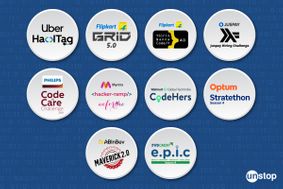
Organize Hackathons: The Ultimate Playbook With Past Case Studies

What is Campus Recruitment? How To Tap The Untapped Talent?
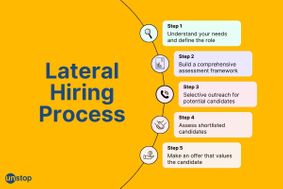
Lateral Hiring: A Complete Guide To The Process, Its Benefits, Challenges & Best Practices
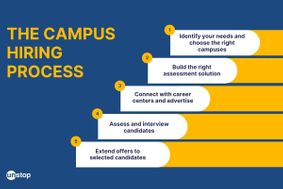












Comments
Add comment